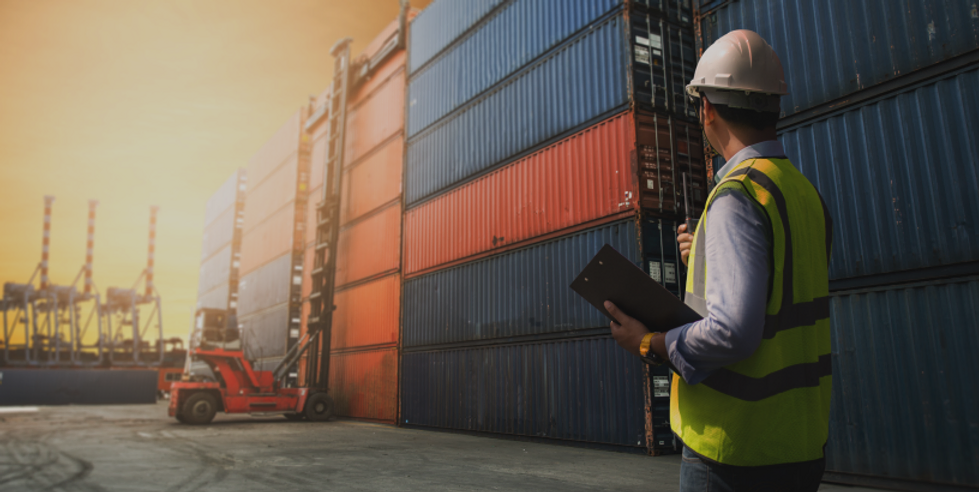– The steps and procedures of the customs clearance process
– Harmonized System Codes (HS Code)
Custom clearance is a necessary procedure before goods can be imported or exported internationally, because it determines the customs duties that are paid according to the country from which they are exported or imported to, due to the variance of customs duties. Some may wonder about the meaning of customs clearance and its procedures, as it is a process that enables companies to export and import goods to and from a country, which is a necessary procedure to allow the goods to be transported in transit, and customs clearance processes can be very confusing, so we try below to clarify the most common ideas and questions about customs clearance.

First: The steps and procedures of the customs clearance process
Customs clearance procedures are very necessary in the both cases of import and export, and one of these steps or procedures cannot be ignored. Hence the importance of contracting with a customs clearance company, whose expertise lies in solving the problems facing customs clearance of shipments, in order to reduce time and save a lot of costs.
The customs authorities begin to send specialized personnel for custom-check to determine the identity of the goods and determine their value and pricing, in order to facilitate the identification of the customs tax imposed on the goods. (This depends on the nature and quality of the goods) In this case, a sample of the shipment is sent to the regulatory authorities to classify. Finally, after examining the goods, either the shipment obtains the final approval, or the shipment comes out under a specific pattern from the supervisory authorities, or the shipment is rejected again and reserve it.

Second: Customs clearance documents
It is known that the customs clearance process requires many documents, and it is important for the company to be aware of all the necessary documents for this process and to ensure that all the required documents are prepared, and to appoint a customs broker or shipping agent who can help by providing advice on the required documents, and the presence of all documents can keep the customs clearance process running smoothly.
Documents for customs clearance operations are divided into two categories:
A- Documents related to the process of exporting goods, which are the certificate of origin and the commercial invoice, and these documents must be certified and official, the bill of lading (an invoice or contract between the shipping line and the owner of the goods), the packing statement (packing list) for the goods, and certificates of the type of goods such as health and agricultural certificates in the event that the goods consist of foodstuffs.

B– Documents related to the process of importing goods, such as the commercial or industrial register, import and tax cards, the customs dealer card, and the import financing request form, where it is issued by the bank through which the shipment amounts are sent to the supplier, taking into account the writing of the transferred value in addition to the type of contract, and of course it is important to have a general authorization for customs broker.
Here are some important tips related to preparing the necessary papers to avoid delays in customs clearance:

1- Complete all necessary documents correctly, make your answers specific, accurate and free of spelling errors.
2- Ensure that the information contained in all required customs documents is correct, to avoid any delays or additional costs that may be imposed during customs check.
3- When filling out the customs documents, we make sure that each commodity is listed separately, and provide a detailed and accurate description of each commodity, including its components and how it will be used, and identify the commodities that require approval from governmental agencies.
4- Clarify the country of origin, manufacturer and exporter of the commodity, and make sure that the contact details of the sender and the addressee are entered.
5- If you are dealing with a customs broker, write his full contact information, to ensure easy communication with him in the event of any problem.
6- Verify that the consignee is registered with the regulatory authorities and is able to provide the required permits, and keep all invoices in anticipation of any arithmetic errors.

Third: Harmonized System Codes (HS Code)
Its main purpose is to classify goods from all over the world in a systematic and logical way. It is an international six-digit classification developed by the World Customs Organization (WCO) and some countries have expanded it to an eight-digit classification for export purposes and a ten-digit classification for customs purposes. It is used to find out the percentage of the duty applied to any commodity by referring to the Nomenclature, which is the only way to determine the class, item and rate of the customs duty for a particular commodity.
The HS is divided into main categories and sub-categories, and each category has a text description that explains the nature of the product it expresses. From a table that includes the main clauses and sub-items and their numerical codes and what are the sections, chapters and general rules. It is considered as a global language used as the basis for the definitions of more than 176 countries or customs unions, and there are 104 countries that have signed its international agreement.
The coordinated system is used by official authorities such as governments, statistical agencies, international organizations, shipping agencies, port authorities, governments, manufacturers and carriers, and finally the system is also used by importers and exporters.

Customs laws are similar in all countries of the world and customs clearance is one of the basic steps and cornerstone of international trade (import and export) which is irreplaceable in any way and greatly helps to establish good relations with clients.
import
export
Custom clearance
Customs clearance documents
steps and procedures of the customs clearance
Harmonized System Codes
HS Code
certificate of origin
customs broker
commercial invoice
the bill of lading
packing statement
packing list
health and agricultural certificates
tax cards
shipping agent
required documents
customs authorities
customs tax
regulatory authorities

